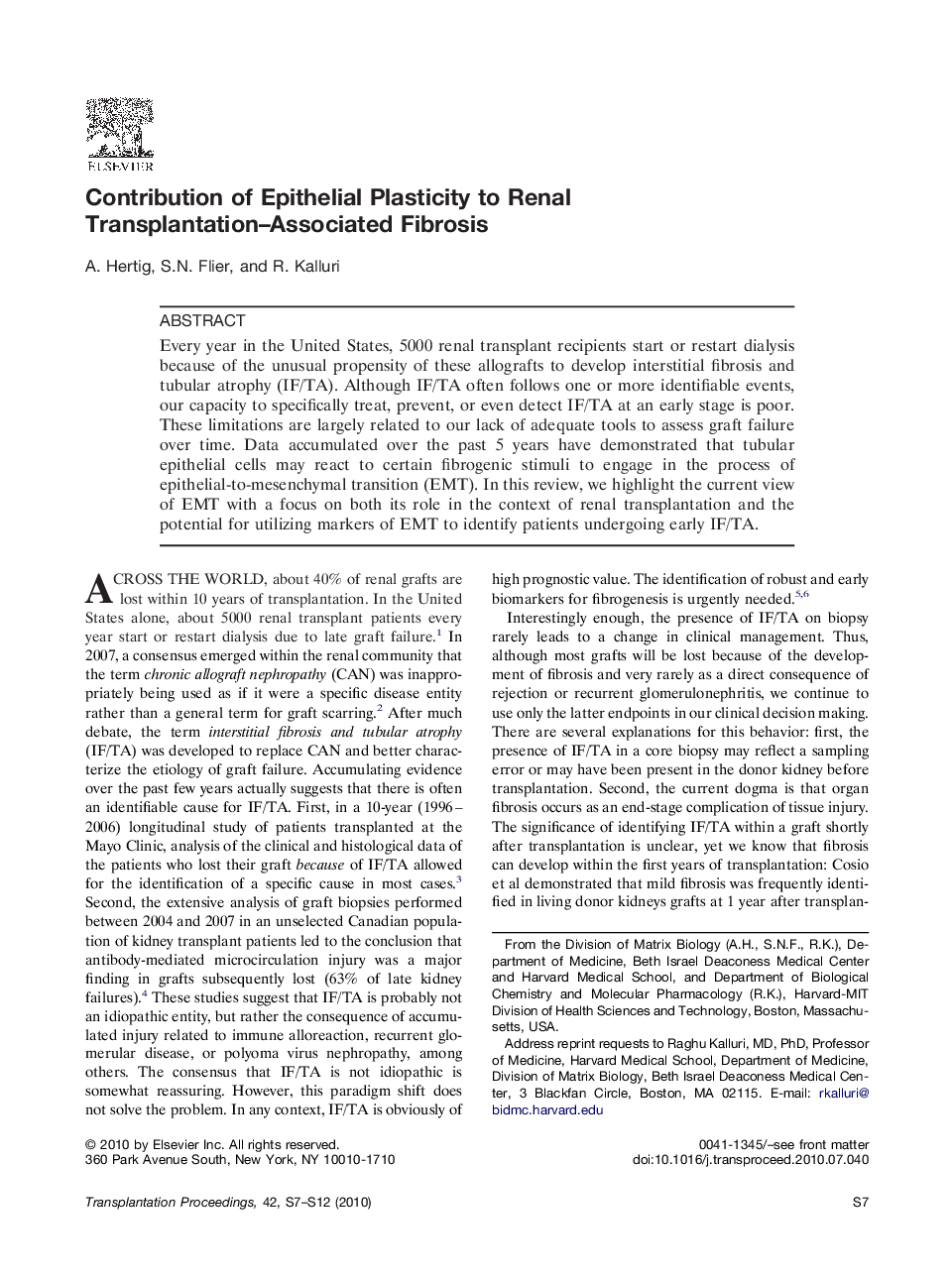| Article ID | Journal | Published Year | Pages | File Type |
|---|---|---|---|---|
| 4257574 | Transplantation Proceedings | 2010 | 6 Pages |
Every year in the United States, 5000 renal transplant recipients start or restart dialysis because of the unusual propensity of these allografts to develop interstitial fibrosis and tubular atrophy (IF/TA). Although IF/TA often follows one or more identifiable events, our capacity to specifically treat, prevent, or even detect IF/TA at an early stage is poor. These limitations are largely related to our lack of adequate tools to assess graft failure over time. Data accumulated over the past 5 years have demonstrated that tubular epithelial cells may react to certain fibrogenic stimuli to engage in the process of epithelial-to-mesenchymal transition (EMT). In this review, we highlight the current view of EMT with a focus on both its role in the context of renal transplantation and the potential for utilizing markers of EMT to identify patients undergoing early IF/TA.
